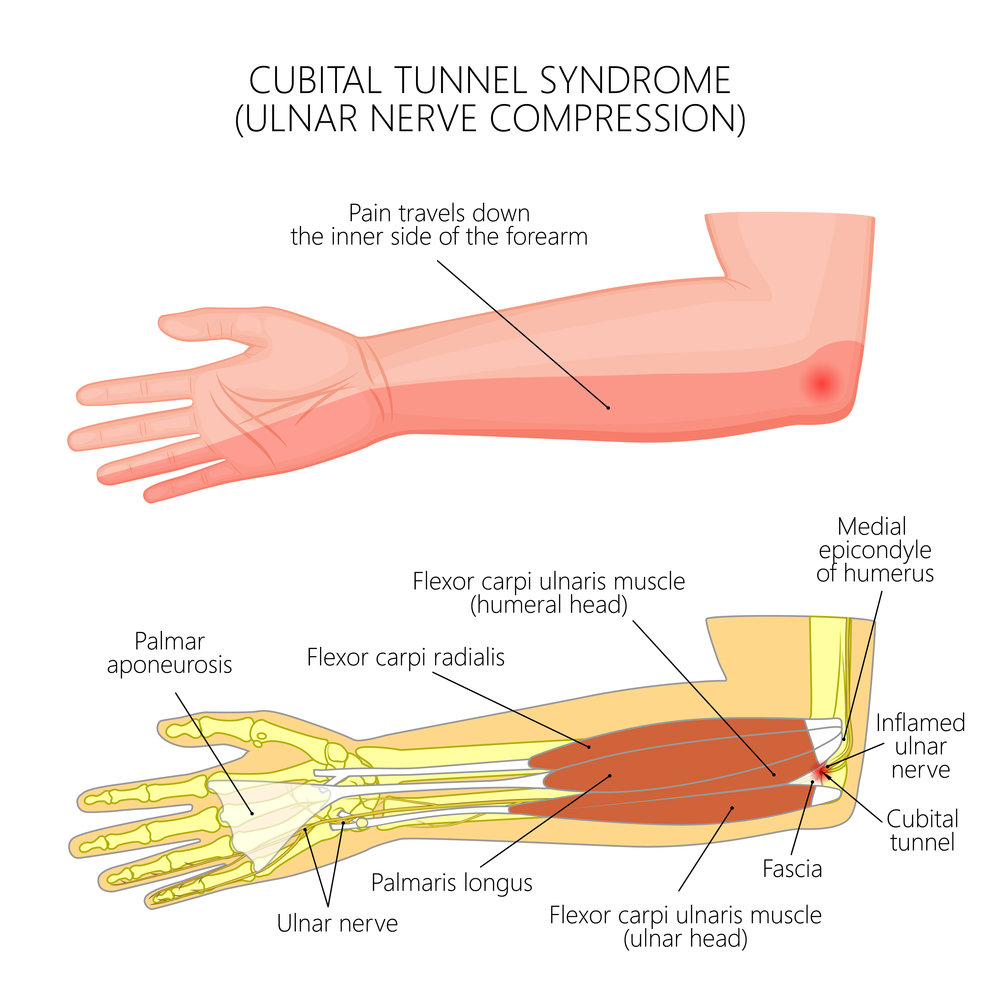Too much pressure of the cubital tunnel can be caused by injury, inflammation, bending the elbow or repetitive elbow movements for too long of a time
Diagnosing cubital tunnel syndrome begins with a thorough discussion and physical exam by your orthopedic physician. X-rays are usually taken to rule out arthritis and if there has been an injury such as a fracture.
Your doctor should rule out other conditions that can cause numbness and tingling in the hands such as diabetes, thyroid problems, some vitamin deficiencies, and pinched nerves in the neck.
The following tests may be requested in order to confirm cubital tunnel syndrome.
- Nerve conduction study/Electromyogram (EMG)
A nerve conduction study/EMG is a test that may be performed in the hand specialist’s office, or may require a referral to a neurologist or other specialist. The test uses electrical impulses to determine where a nerve may be compressed or to determine whether there is any neuropathy that may be caused by an underlying condition.
- Blood tests
Return to the primary care provider may be recommended for further evaluation and blood testing that can rule out things like diabetes and thyroid problems that may mimic cubital tunnel syndrome symptoms.
Cubital tunnel release is recommended if there is no improvement with conservative management, or nerve compression is causing muscle weakness or damage. The goal is to relieve the pressure on the ulnar nerve by cutting the ligament over the nerve and anything else that may be compressing the ulnar nerve. In some instances, it may be necessary to move the nerve from behind the elbow to the front of the elbow (ulnar nerve transposition), or remove part of the bone next to the nerve (medial epicondylectomy).
Cubital Tunnel surgery is a successful procedure. After cubital tunnel release, most patients can begin range-of-motion exercises immediately and gradually progress to active stretching and strengthening exercises. Typically, relief from numbness is experienced quickly after surgery, but depending on the degree of irritation of the nerve prior to surgery, it may take months for the nerve to recover completely.
**Disclaimer: Treatment recommendations may vary depending on your true diagnosis. Always follow the recommendations of your orthopedic provider.

